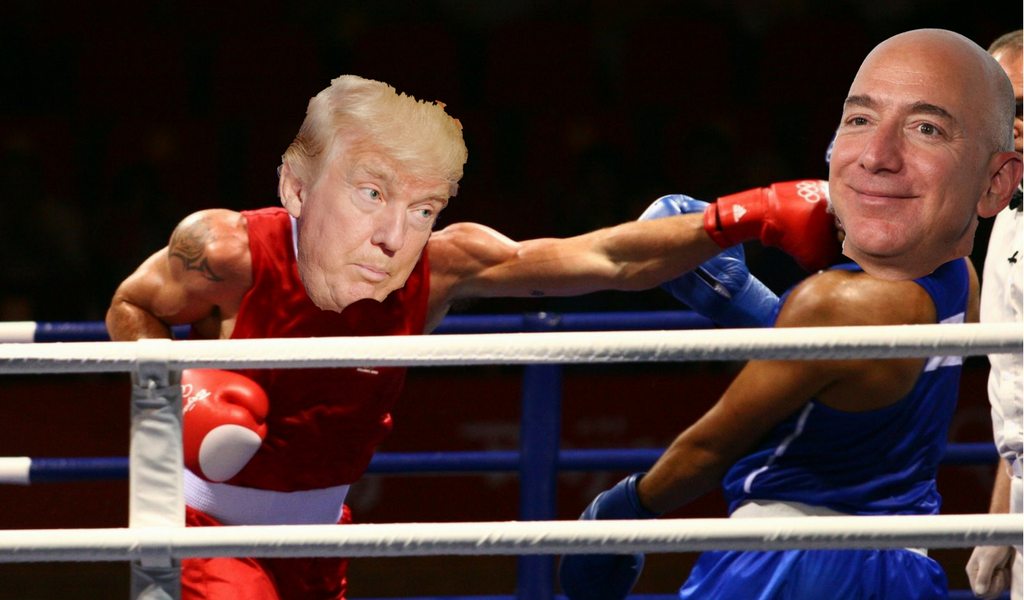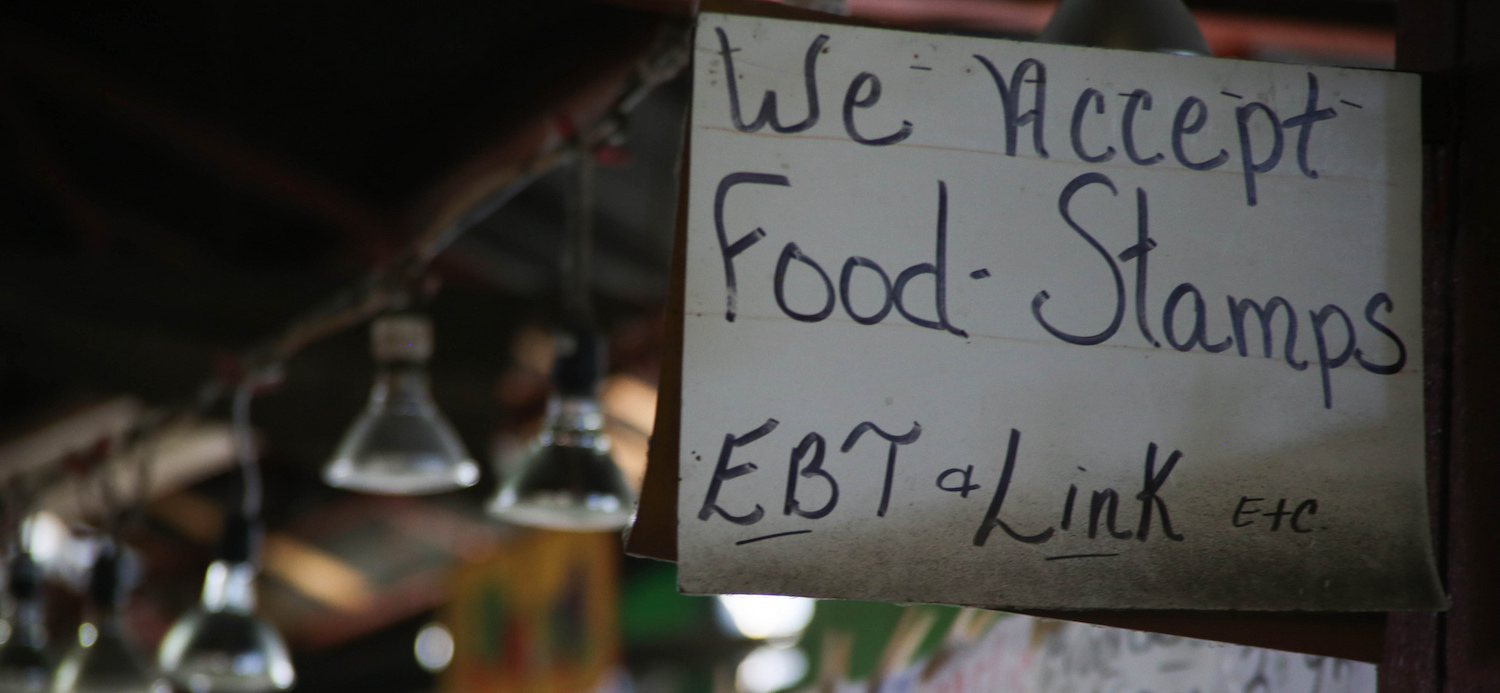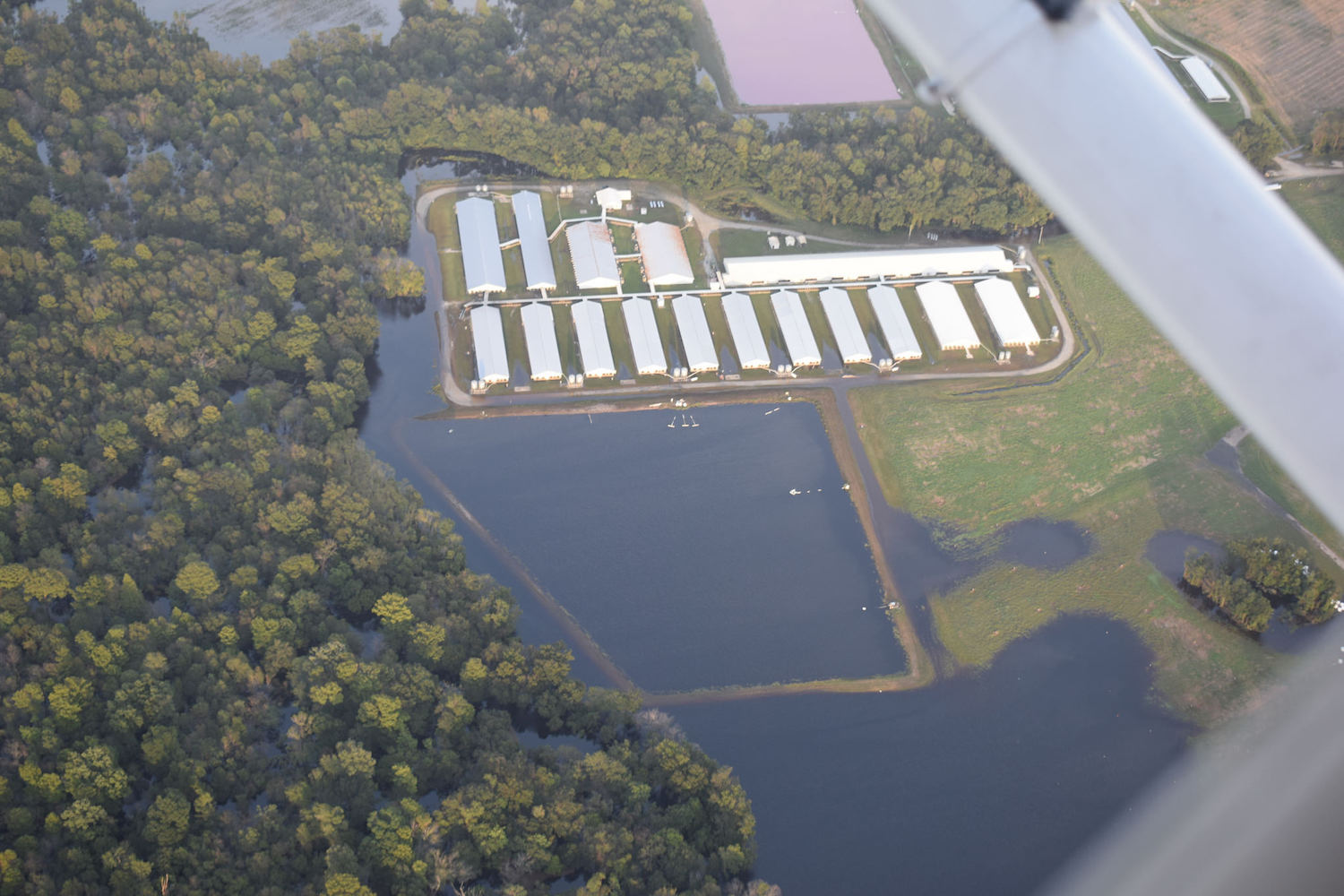
Since last week, the Amazon/Whole Foods beat—A-Whole, by our shorthand—has been dominated by one story: President Donald Trump’s one-sided feud with Amazon.
By now, you’ve likely read about Trump’s series of aggressively critical tweets blasting the company. It’s obviously not the first time the president’s taken to the bully pulpit via Twitter— though, as MarketWatch points out, it’s highly unusual for a sitting American president to decry a specific American corporation at any length. In any case, Trump’s tirade seems to have had a some kind of an impact. Since Wednesday, Amazon stock has lost 8 percent of its value—a $60 billion loss, according to CNN Money—leading a 2 percent loss for the Nasdaq.
A question remains: Does Trump’s beef with Amazon have any merit? No, and yes—but either way, it has everything to do with the future of Whole Foods. Here’s why.
Prime gripes
The kerfuffle likely started on Wednesday, March 28, when Axios published a story claiming President Trump is “obsessed” with Amazon (he’s clearly not totally alone in this). According to anonymous sources quoted in the story, Trump feels the company is hurting shopping malls and other brick-and-mortar retailers—the cornerstone, it’s worth pointing out, of the kinds of lucrative real estate deals that have long been his stock in trade.
Trump subsequently doubled down on his claim with follow-up tweets on Saturday, Monday, and Tuesday, pausing only for a brief Easter break.
Does Amazon have a sweetheart deal with the Postal Service? Maybe, but not quite in the way Trump suggests. And the claim that the arrangement is driving USPS into debt is not accurate.
Let’s start at the beginning. Amazon, like all food delivery and e-commerce companies—from Blue Apron to Jet.com—has a “last mile” problem. In other words, while it’s easy to move packages from one large transit depot to another, it’s extraordinarily difficult to get goods that pesky last mile to people’s doors. Home delivery is an expensive logistical nightmare, but it’s a nightmare that USPS has been navigating for generations, which is why most companies are happy to contract out the Postal Service’s labor, and leave delivery to the experts.
Amazon uses USPS for two-thirds of its deliveries, according to one estimate. But does USPS give Amazon an especially good deal for the packages it delivers? Not necessarily. Though the company does receive a bulk discount, that’s not unusual—USPS offers discounted shipping rates to many of its high-volume companies. The trouble is that the exact details of Amazon’s arrangement aren’t known; on the version of its pricing agreement that was released to the public, whole pages are redacted entirely. Still, there’s no reason to believe USPS has given Amazon an anomalously sweet deal.
It’s supposed to be illegal for USPS to deliver packages at rates below what it costs to ship them. That’s thanks to the Postal Accountability and Enhancement Act of 2006, which stipulated that all USPS’s services must be priced to cover an “appropriate share” of its costs. Some media outlets have taken this to mean that USPS cannot, by law, undercharge Amazon.
But the reality is more knotty. According to that same Citibank analysis, conducted in 2017,
USPS estimated that parcel delivery service—as opposed to first-class mail—accounted for only 5.5 percent of its overhead in 2006, the year the accountability act was passed. That share of its expenses has more than likely grown dramatically in the interim, thanks to the rise of e-retailers like Amazon: Citibank’s report says that the Postal Service’s shipping rival, UPS, now credits parcel delivery with 24.6 percent of its expenses. Meanwhile, USPS’s expense estimate has remained unchanged. If parcel delivery is significantly more than the 5.5 percent of overhead that USPS claims, it’s possible that it could be under-charging its big customers. But without more detail about USPS’s finances and Amazon’s arrangement, we really can’t know.
“Like many close observers of the shipping business, I know a secret about the federal government’s relationship with Amazon: The U.S. Postal Service delivers the company’s boxes well below its own costs,” the author, Josh Sandbulte, co-president of a New York investment firm, wrote in the op-ed. (At the time, his company owned FedEx common stock.) “Like an accelerant added to a fire, this subsidy is speeding up the collapse of traditional retailers in the U.S. and providing an unfair advantage for Amazon.”
The claim that Amazon gets a $1.46 discount on every package it ships—”like a gift card from Uncle Sam”—has since been repeated again and again in the press. There’s just one problem: It’s not true. Sandbulte’s source for this figure was the same Citibank analysis I mentioned above, which did estimate that USPS would need to charge $1.46 more per parcel shipped to cover its expenses—but that claim came with two major caveats. First, the figure is based on competitor UPS’ reporting of its expenses, not USPS’s; as such, it’s only a very rough estimate, and it’s not apples to apples. Second, the estimate had nothing whatsoever to do with Amazon: The report’s point was that USPS is likely losing money on all parcels shipped, and not just when doing business with companies owned by Jeff Bezos.
 Photo courtesy of Amazon
Photo courtesy of Amazon USPS may lose money on packages it ships with Amazon, and it may even give the world’s largest e-retailer singularly deep discounts. The truth is that we don’t know. But one thing’s clear: The $1.46 figure cited by so many, including the President of the United States, is a speculative figure that does not single out Amazon. Others have pointed out that parcel delivery is a rare bright spot for the USPS.
“Packages and shipping are one area that’s growing for the postal service, bringing in more than $19 billion in revenue last year even as volume of letters and magazines declined,” CBS reports. “In fact, its projected revenue growth ‘is driven entirely by increases in shipping and packages,’ the postal service said in its latest annual report.” Amazon has consistently claimed that its arrangement with USPS is profitable for the government.
Which is where Whole Foods comes in. Yes, Amazon could work to compete directly with the USPS, building its own delivery fleet. It’s already working to do that, from investing in its own trucks to trying to invent a brave new world of home-delivering drones and blimps. But what if Amazon was able to find a way to sidestep the last mile problem all together?
That’s where Whole Foods could prove to be really useful. As Bloomberg reports, Amazon is increasingly interested in using Whole Foods stores as pick-up depots for goods ordered through Amazon.com—eliminating the last mile problem entirely. If more people went to Whole Foods to pick up their Amazon.com purchases, rather than having them shipped to their doors, it would make things much cheaper, and much less complicated, for Amazon. Viewed this way, Whole Foods’ deeply discounted produce is not just a way to entice Prime subscriptions and increase foot traffic. It’s way to entice online shoppers to skip home delivery altogether—to embrace the low prices and variety offered by online retail without the convenience.
In other words, expect to see the food at Whole Foods increasingly offered as a loss leader. The fancy cheeses and organic produce are being wielded as a tool to bring Amazon what it really needs—close-to-home delivery that sidesteps the Postal Service.










